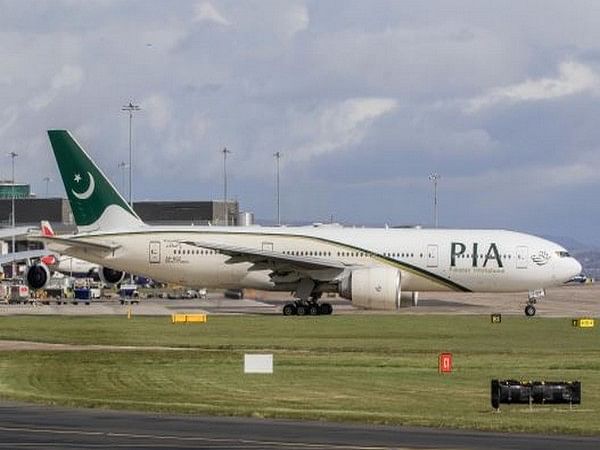Arshad Mahmood Awan
In a daring and innovative military maneuver, Ukraine has rewritten the rules of modern warfare. The recent attack on Russia’s strategic air bases—Belaya and Olenya—marked a critical shift in how smaller nations can counter more powerful adversaries through low-cost, high-impact tactics. By using modified freight trucks to transport and launch suicide drones deep into Russian territory, Ukraine has demonstrated an unprecedented ability to disrupt Russia’s long-range military capabilities.
The targeted airfields, Belaya and Olenya, are not ordinary military installations. They serve as bases for Russia’s long-range strategic bombers, including the Tu-95 and Tu-160 aircraft—cornerstones of Russia’s cruise missile and nuclear strike capabilities. Ukrainian sources claim that approximately 40 aircraft were damaged or destroyed in this operation. If verified, this would represent one of the most substantial single-day material losses for the Russian Air Force since the war began.
The destruction of these bombers significantly impairs Russia’s ability to launch deep-strike missions against Ukrainian infrastructure and military positions. More importantly, these losses erode a critical part of Russia’s nuclear deterrent strategy. The Tu-95 and Tu-160 bombers, already difficult and costly to maintain, are nearly irreplaceable under the current climate of Western sanctions and disrupted supply chains. The impact on Moscow’s long-term military planning is immense.
What makes this attack revolutionary is not just the damage it caused, but how it was executed. Ukraine did not rely on traditional military means—fighter jets, tanks, or artillery. Instead, it used inexpensive, commercially adaptable drones delivered covertly via freight trucks. This not only bypassed Russian radar and air defense systems but also exposed the glaring weaknesses in Russia’s internal security and surveillance.
This is a textbook example of asymmetric warfare. For the cost of a few thousand dollars per drone, Ukraine managed to inflict billions in damage to high-value military assets. The operation shifts the global military narrative, proving that innovation and adaptability can outperform sheer numbers and firepower. It underscores a critical evolution in conflict strategy: technology and creativity now serve as the most potent weapons in the modern arsenal.
The psychological blow to the Kremlin may be as significant as the physical damage. The fact that drones could travel over 1,800 kilometers to Olenya and nearly 4,000 kilometers to Belaya without being intercepted raises grave questions about Russia’s internal security apparatus. How were these drones transported undetected across Russian territory? What does it say about the effectiveness of Russian military intelligence?
This embarrassment forces the Kremlin to confront a painful truth: its defense systems are not just vulnerable at the front lines, but also deep within its own borders. The Russian public, already fatigued by a prolonged war, may view this incident as further evidence of government incompetence. For President Vladimir Putin, who projects an image of invincibility and control, such lapses are politically damaging.
In the aftermath, Russia is expected to respond in a multi-dimensional manner. Militarily, the Kremlin may escalate missile strikes on Ukrainian cities and infrastructure. There could be renewed threats of nuclear posturing, particularly to signal strength and dissuade further Ukrainian attacks on strategic assets. Domestically, the Russian government is likely to tighten internal surveillance, increase scrutiny at checkpoints, and accelerate the deployment of counter-drone technologies.
Information warfare will also intensify. Russian state media will likely downplay the damage or portray it as a temporary setback while portraying Ukraine’s actions as reckless or “terroristic.” These efforts aim to control the narrative, rally domestic support, and justify harsher military operations going forward.
However, none of these steps can undo the material and symbolic losses already suffered. If anything, Russia’s response will further reveal the pressure it faces—militarily, politically, and economically—in trying to maintain dominance in a war that no longer adheres to conventional logic.
Ukraine’s strike has global implications. Militaries worldwide are now reevaluating their doctrines and defense systems. The idea that a state can use improvised, commercially available technologies to cripple a superior foe’s strategic assets will resonate far beyond Eastern Europe. For smaller nations facing regional threats, Ukraine’s example offers a compelling blueprint: success in future conflicts will depend less on the scale of resources and more on strategic innovation.
This development could inspire changes in defense spending priorities. Governments may begin to invest more in drone technology, cyber capabilities, and mobile warfare units rather than traditional platforms like fighter jets and heavy artillery. It also raises ethical and legal questions about the use of commercial infrastructure—like freight trucks—for military purposes, blurring the line between civilian and combat zones.
The Ukrainian drone strike on Belaya and Olenya air bases is more than just a military success—it is a pivotal moment in 21st-century warfare. It showcases how asymmetric strategies, when smartly executed, can undermine even the most well-equipped adversaries. It also exposes the strategic vulnerabilities of nations that rely heavily on legacy military systems and outdated security frameworks.
For Russia, the consequences are far-reaching. Beyond the material losses, the attack has shattered the illusion of impenetrability and forced a recalibration of its defense posture. For Ukraine, it is a symbolic and strategic victory that affirms its resilience and ingenuity in the face of overwhelming odds.
And for the world, it is a wake-up call: the future of warfare is not about bigger weapons—it is about smarter wars.















